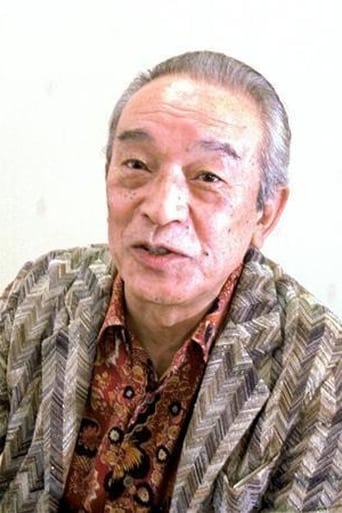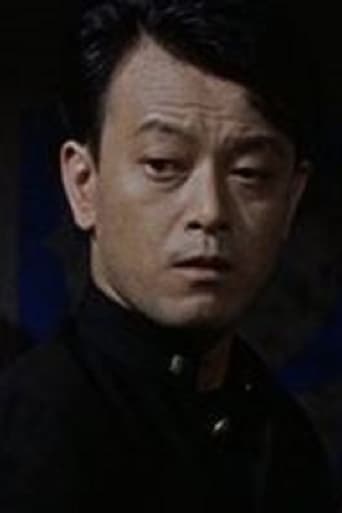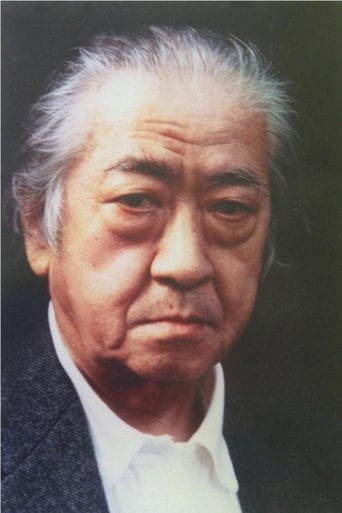Stometer
Save your money for something good and enjoyable
Smartorhypo
Highly Overrated But Still Good
Dynamixor
The performances transcend the film's tropes, grounding it in characters that feel more complete than this subgenre often produces.
Juana
what a terribly boring film. I'm sorry but this is absolutely not deserving of best picture and will be forgotten quickly. Entertaining and engaging cinema? No. Nothing performances with flat faces and mistaking silence for subtlety.
WILLIAM FLANIGAN
Viewed on DVD. Restoration =ten (10) stars; subtitles = four (4) stars; cinematography/lighting = two (2) stars. Director Nagisa Oshima's what-ever-sticks-to-the-wall film experiment sans an exposure meter. A muddled scenario serves mainly as a vehicle for the Director to show off. Most of the photo play consists of truncated (due to Oshima 's use of TV-style close-ups in a wide-screen format) heads incessantly talking about suicide, sex, suicide, and, oh yes, suicide. To break up the monotony, the Director has the camera drift from side to side across the faces of speakers as if they are adrift in a slowly-rocking boat. The lead actor's character comes across more as simple minded rather than as a menacing sex "demon" (or crazed rapist). Lead actresses valiantly try to rise above the banal script despite being saddled with lines consisting of endless variations on themes of suicide (and sex). (Arguably the best line in the script is when a character laments that she has already had two unsuccessful suicides and she is only 20 years old!) While at some level this is meant to be a sex movie, nonetheless Oshima manages to leverage his repetitious direction into viewer disinterest followed by abject boredom-- despite throwing just about "everything" on the let's-shock-the-viewer menu into his mash-up (from hang-'em-high suicides to startling nudity to necrophilia, and on and on). Cinematography (wide screen, black and white) comes across as little better than a home movie with most scenes over or under exposed (the brightness of many exterior scenes may force some viewers to dawn sunglasses to avoid headaches!). Scene-to-scene lighting continuity is close to none existent. Subtitles can be a tad too long and have a tendency to flash by too quickly (the translator would appear to have only a limited familiarity with Kansai-Ben (Western dialog)). The film score is okay, but nothing great. Sound is fine. Recommend skipping this sleep-inducing ego trip! WILLIAM FLANIGAN, PhD.
TheExpatriate700
Oshima's Violence at Noon is a meditation on the destructive capacity of love. It traces the course of a grotesque love triangle between a rapist and two women who both love him, leading to an ultimately tragic conclusion.This is a deliberately deep, art house film, with much ponderous dialogue. The dialogue serves as much to express Oshima's ideas on love as to advance the plot, with lines such as "Love has no rewards." The film also features some great cinematography, with excellent use of black and white. A sequence in which a violent attack is represented by a series of photographs is a particular highlight.However, the film suffers from a tendency to let ideas take precedence over characterization. We often have little idea why the characters do certain actions, a particular problem given that some of their activities are extreme. Ultimately, this is a thought-provoking film that at times descends into the head scratching.
treywillwest
I really don't know why Oshima's early films have taken so long to become available in the U.S. They are spectacular! I suppose because their thematic content is so specific to the Japan of the post-war "reconstruction" at the hands of the Americans. As radical, contemporary, and at times experimental as Oshima's films from this era were, his landscapes, to my eye, more closely resemble the tradition of Japanese landscape-painting than those of Kurosawa or Mizoguchi. In this film, the past is captured in just such painterly, deep-focus majesty, with dizzying zooms thrown in just to leave you disoriented. The present is soft, blurry, almost indiscernible at times. I'm interpreting the political content of this violent, lude, nasty story to deal with Japan's inability to live up to its WWII atrocities, or from a different perspective, the ease with which it forgave itself. I admit that I don't see how the last scenes fit into that interpretation, but that doesn't make those scenes any less haunting.
Sturgeon54
I bought a rare copy of this for $1 at my local library, being a fan of foreign (especially Japanese) cinema, and never having heard of the director, Nagisa Oshima. I definitely cannot say that the film is bad, because like the reviewer above, I did not understand it. It isn't that I had difficulty following what was happening in the storyline, which was pretty straightforward, but I just had no idea what the intent of the filmmakers were, what the purpose of the story was. The storyline is so bizarre and sensationalistic - a serial rapist and his relationship with both his wife and one of his victims, all three of whom used to be part of some kind of commune for intellectuals (I didn't even know it was a commune until reading another reviewer's synopsis) - that I am sure there must be some underlying symbolism or message here the director was trying to convey. Maybe it had something to do with Japanese society of the time (1966), I'm not sure? Therefore, I must give my opinion of the outward details of the film. The black-and-white cinematography of the film was exquisite, and the constant cutting of shots from scene to scene was highly impressive. It is obvious a great deal of energy and resources were put into the production. This film is outwardly exceedingly beautiful, on a par with other such visual Japanese films as "Kwaidan" and "Kagemusha." The music score was arresting, as well. Other reviewers all seem to compare this to the work of French director Alain Resnais, but I have never seen any of his films. To me, the film seemed distantly related to the works of Stanley Kubrick in its meticulous attention to visual compositions (I saw the film in widescreen, and I can't even imagine watching it in full screen) and its delving into very dark, uncharted psychological territory. Another film to compare this to is Nicholas Roeg's "Bad Timing: A Sensual Obsession" - another dark, non-linear, visually beautiful film whose themes were very difficult to penetrate. The other major drawback is the length - this film does seem to go on about a half hour too long.I would love to have a conversation with the director on just what the storyline means, but unfortunately, I had to watch it without any frame of reference. That made it a frustrating intellectual experience, but an impressive aesthetic one.





